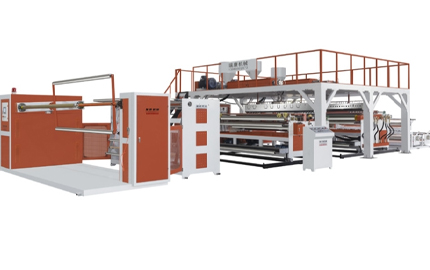The automatic air bubble film machine mainly uses LDPE and LLDPE pellets as raw materials for producing air bubble films. Its working process consists of several key steps that work in synergy to ensure the quality and performance of the final product.

I. Raw Material Processing and Extrusion
The raw materials first enter the twin-screw system of the main extruder. This twin-screw has a unique design that can precisely control the conveying and plasticizing parameters of each layer of materials. When the screws rotate, relying on the differences in pitch, thread depth, and temperature distribution in different regions, an ideal plasticizing environment is created for the materials of the film layer and the bubble layer. In this way, independent and precise temperature control, speed control, and quantity control of each layer of materials can be achieved. This not only ensures the stability of the multilayer structure but also effectively prevents material mixing or uneven thickness between layers.
II. Forming Process
After extrusion, the materials in a molten state are transported to the forming system. At this stage, according to the preset bubble size and layout requirements, with the help of specific molds and flow channel designs, the melt is accurately formed into an initial film with a bubble structure under the drive of pressure. For example, by replacing the embossing roller, the size and style of the bubbles can be changed. This is because factors such as the texture, diameter, and arrangement of the embossing roller directly determine the size, shape, and distribution spacing of the bubbles, thus meeting diverse packaging needs.
III. Traction Operation
The formed initial film is then transported by the traction device. The traction device operates stably according to the set speed and tension. During this process, through the cooperation of high-precision sensors and the control system, a constant tension and uniform traction speed can be accurately maintained. Such an operation can effectively avoid problems such as stretching deformation or wrinkling of the film during traction, thus ensuring the dimensional accuracy and stability of the physical properties of the film.
IV. Winding Process
Finally, the film enters the winding process. The winder can make dynamic adjustments according to the tension feedback. Through the cooperation of the tension controller and the motor, the film can be wound flat and tightly around the core. The winding speed and tension match the extrusion and traction processes, preventing the film roll from being loose or damaged. This not only improves the convenience of packaging and transportation but also enhances the stability of product storage, ensuring that the final finished product can meet high-quality standards and meet the packaging needs of numerous industries such as furniture and hardware.